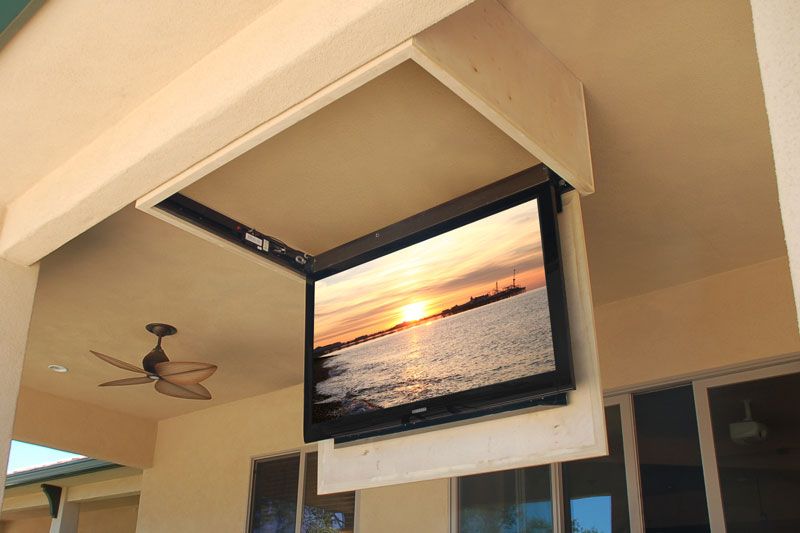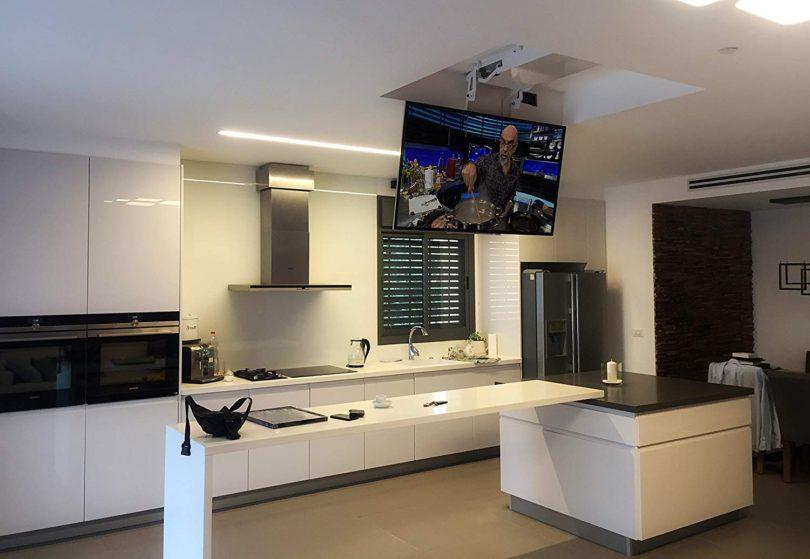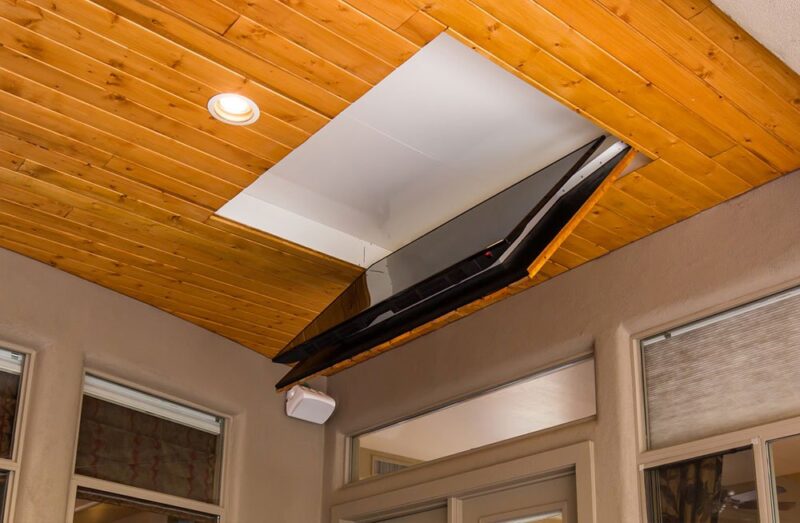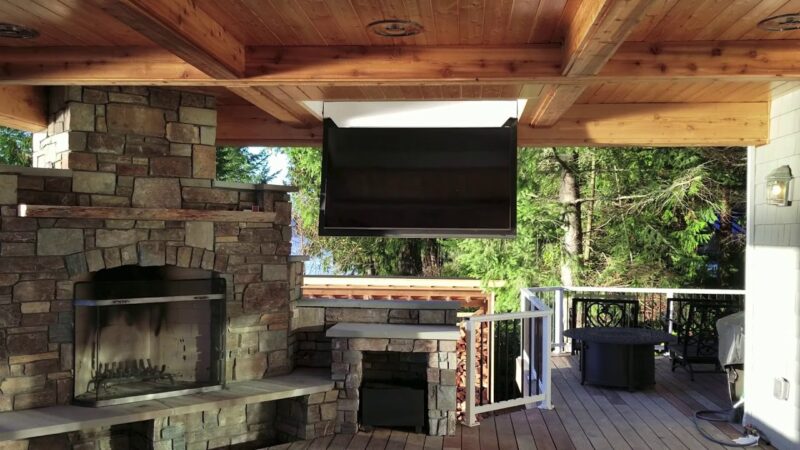Televisions are no longer a thing for the living room alone. Nowadays, TVs go into almost every space in the house, and the bedroom isn’t left out. However, rather than put your screen on display like everyone else, you can go for a flip-down TV.
Having a flip-down TV in your bedroom comes with significant benefits. The TV stays hidden in a compartment in the ceiling when not in use, so the flip-down setup helps save space. If you’re considering adding a flip-down TV to your sleeping area, you’re on the right page. Let’s first cover the different components.
Components of A Bedroom Flip-Down TV

To install your bedroom flip-down TV, you’ll be assembling various individual parts. We discuss these components in detail below.
TV Bracket
Here’s the part you’ll attach to the back of your television, and thanks to it, your screen can tilt and swivel. Consequently, you’ll also connect the bracket to the mounting plate in the ceiling. That’s essentially how the screen flips down when you activate the mechanism. Note that some TV brackets feature a lock, and, in our experience, they’re ideal as they ensure the television is always secure.
Mounting Plate
The mounting plate of a bedroom flip-down TV stays in the ceiling, just as it would stay on the wall if you were simply hanging your television. You’ll connect it to the TV bracket using a hinge or joint, depending on the design. It’s important that this component is sturdy. Otherwise, your TV will fall down once you activate the flip mechanism.
Motorized Mechanism

This component is what controls the flipping motion as your TV goes up and down. Flip-down TV devices usually have a built-in mechanism installed in the mounting plate or frame. Also, the mechanism can employ any motion device type, but most use linear actuators.
When creating straight, accurate motion, finding a device that works better than linear actuators is difficult. Besides a bedroom flip-down TV, you can find a use for them in many tasks to simplify your home activities because they’re easy to use. They’re also primary, influencing how you operate the flip-down TV. Check this website and find more about them.
For instance, if the actuator is remote-controlled, that’s also how you’ll control the flip-down setup. If the actuator features a sensor, that’s even better as you get a smarter operation. We’ll highlight some suitable linear actuators you can use later on.
Cable Management System
Your flip-down TV should have a clean look. It won’t be eye-pleasing if you have cables and wires hanging from the ceiling, and that’s why a cable management system is necessary. Besides the view, the cable management system helps prevent the wires from interfering with the flip-down motion.
As you’ll expect, the component conceals your TV cables and cords in a hidden compartment. Some flip-down TV devices integrate the system with the mounting plate or TV bracket. However, others feature it as a separate component, which you’ll attach to the ceiling.
Suitable Linear Actuators for Flip-down TV Setup
While searching for a linear actuator for your flip-down TV, you’ll notice many different types in terms of capacity. A suitable one for your setup will depend on many factors, among which your television size is paramount. To find the right linear actuator, use our linear actuator calculator.
First, you need an electric linear actuator. Next, you should pay attention to stroke length and carrying capacity. In some cases, you’ll also need to consider voltage.
Stroke Length
Stroke length refers to how far a linear actuator can travel. Since we’re discussing a flip-down TV setup, it implies the distance at which your television drops down from the ceiling. You may need the TV lowered to the center of the room or just a few inches away from the roof. For the former, you’ll need a linear motion device with a high stroke length, while the latter would require less.
Carrying Capacity

Carrying capacity is a more critical factor in knowing whether an actuator is suitable. Linear actuators that support a few lbs of weight won’t be workable if you own a large TV. The good news is that televisions weigh around 7 to 100 lbs, but you can find heavy-duty actuators that can handle up to 1,000 lbs.
Voltage
Turning the focus to voltage, it’s easy to understand why it’s critical when choosing a suitable linear actuator for a flip-down TV. You’re en route to damaging your television if you use a motion device that supports an incompatible voltage. Meanwhile, with the right voltage linear actuator, you get optimal performance.
Most linear actuators come with either a 12v or 24v rating. The 12v types are the norm, as they apply to everyday tasks. However, they have a higher current draw, meaning 12v linear actuators require a high-capacity power source. Here, you may want to consider your electricity bill.
If you go for a 24v linear actuator, of course, you’ll get much better performance. Such actuator types use less current, making them cost-effective to maintain, even though they are somewhat expensive to purchase. 24v linear actuators are perfect for demanding applications, most especially industrial-related. You may not need them for your flip-down TV setup, unless you have a large television set.
Conclusion
The bedroom is for sleeping, no doubt. But who said you can’t also make it a room for entertainment and fun. As you lay on your bed or handle other tasks in your bedroom, you can turn on the TV to get a hint of what’s happening in society. A flip-down TV setup makes things much more convenient by not always keeping the screen visible. In addition, with the right linear actuator, you can operate your flip-down mechanism seamlessly.

